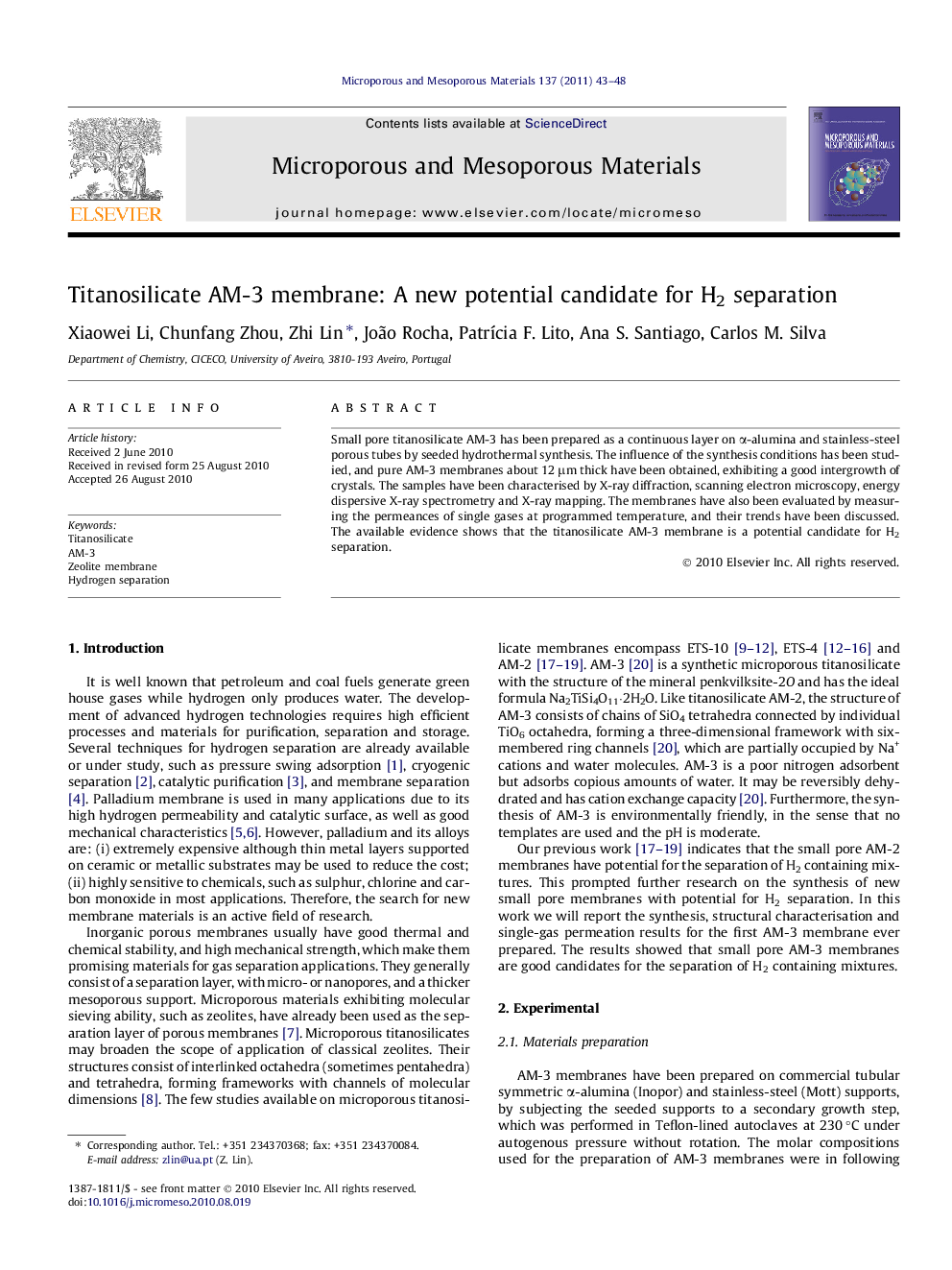| Article ID | Journal | Published Year | Pages | File Type |
|---|---|---|---|---|
| 74984 | Microporous and Mesoporous Materials | 2011 | 6 Pages |
Small pore titanosilicate AM-3 has been prepared as a continuous layer on α-alumina and stainless-steel porous tubes by seeded hydrothermal synthesis. The influence of the synthesis conditions has been studied, and pure AM-3 membranes about 12 μm thick have been obtained, exhibiting a good intergrowth of crystals. The samples have been characterised by X-ray diffraction, scanning electron microscopy, energy dispersive X-ray spectrometry and X-ray mapping. The membranes have also been evaluated by measuring the permeances of single gases at programmed temperature, and their trends have been discussed. The available evidence shows that the titanosilicate AM-3 membrane is a potential candidate for H2 separation.
Graphical abstractTitanosilicate AM-3 membranes have been prepared on porous alumina and stainless-steel tubular supports. The continuous and intergrown layer of AM-3 (ca. 12 μm thick) forms on the support surface, rather than inside the pores of the support. These membranes show the desired predominance of the activated diffusion mechanism at increasing temperatures. The available evidence shows that the AM-3 membrane is a candidate for small molecule separation.Figure optionsDownload full-size imageDownload as PowerPoint slideResearch highlights►Titanosilicate AM-3 forms layers on the porous supports. ► The channels of AM-3 are perpendicular to the support surface. ► AM-3 membranes have potential to separate small molecules.
